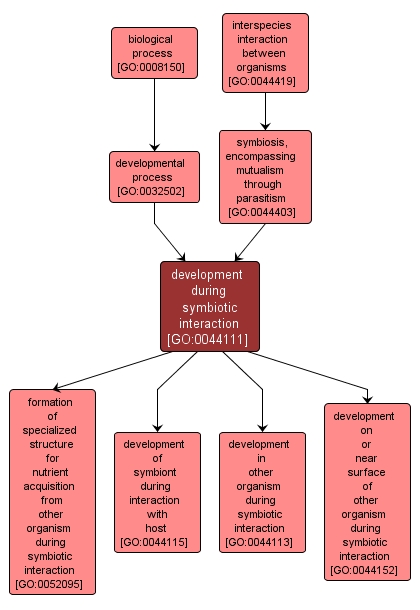GO TERM SUMMARY
|
| Name: |
development during symbiotic interaction |
| Acc: |
GO:0044111 |
| Aspect: |
Biological Process |
| Desc: |
The progression of an organism from an initial condition to a later condition, occurring when the organism is in a symbiotic interaction. |
|

|
INTERACTIVE GO GRAPH
|














